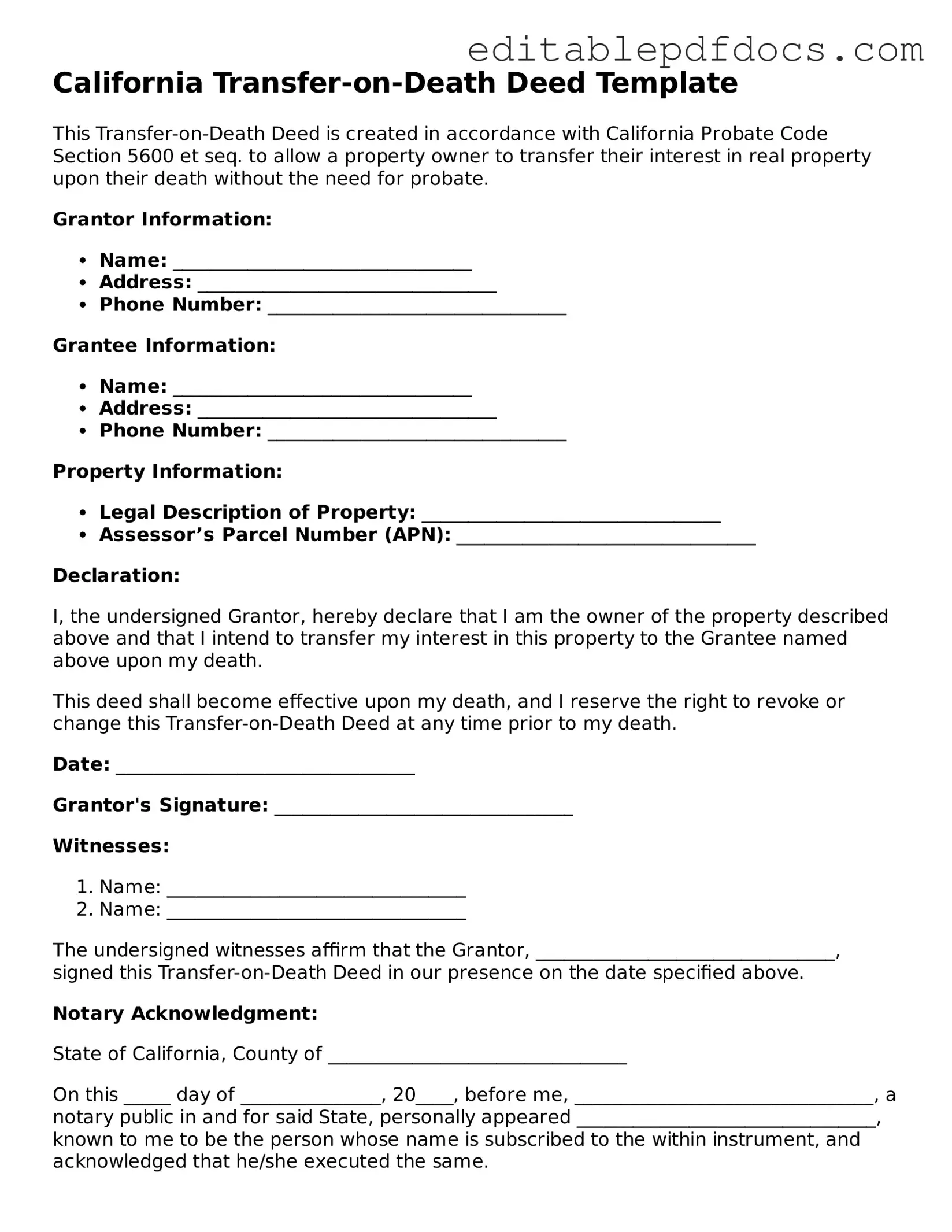Filling out the California Transfer-on-Death Deed form can be a straightforward process, but several common mistakes can complicate matters. One frequent error is failing to include the legal description of the property. This description is essential for identifying the specific property being transferred. Without it, the deed may be deemed invalid.
Another mistake involves not properly identifying the beneficiaries. It is important to clearly state the full names of all beneficiaries. Omitting a middle name or using nicknames can lead to confusion and potential disputes among heirs. Additionally, individuals sometimes mistakenly believe that listing a beneficiary’s name is sufficient without ensuring that they are eligible to inherit.
People often neglect to sign the deed in the presence of a notary public. California law requires that the deed be notarized to be legally binding. Failing to do so can render the document ineffective, leaving the property in a state of uncertainty regarding its future ownership.
Some individuals mistakenly assume that the Transfer-on-Death Deed automatically revokes any previous wills or trusts. This is not the case. A Transfer-on-Death Deed operates independently of other estate planning documents, and individuals should ensure that their overall estate plan is consistent and clearly articulated.
Another common error is not recording the deed with the county recorder’s office. Simply filling out the form does not complete the transfer process. The deed must be filed with the appropriate local authority to ensure that the transfer is recognized legally and to avoid complications later on.
Moreover, individuals sometimes fail to consider the implications of their transfer on tax liabilities. While a Transfer-on-Death Deed allows for the avoidance of probate, it does not eliminate potential tax consequences. Beneficiaries should be informed about any tax obligations that may arise from inheriting property.
Lastly, many people overlook the need for periodic reviews of their Transfer-on-Death Deed. Life circumstances change, and beneficiaries may need to be updated. Regularly reviewing and potentially revising the deed ensures that it reflects current intentions and family dynamics.
